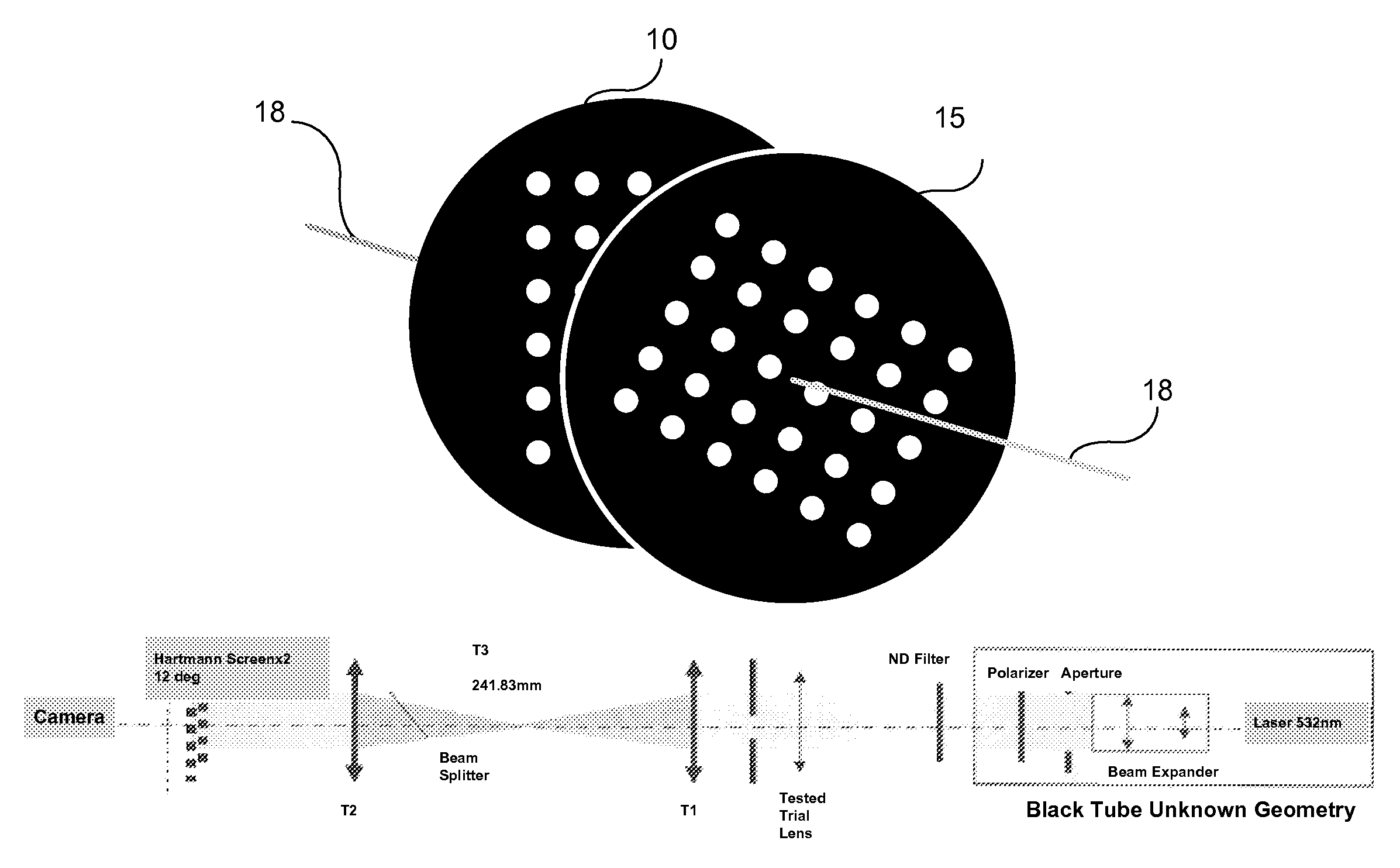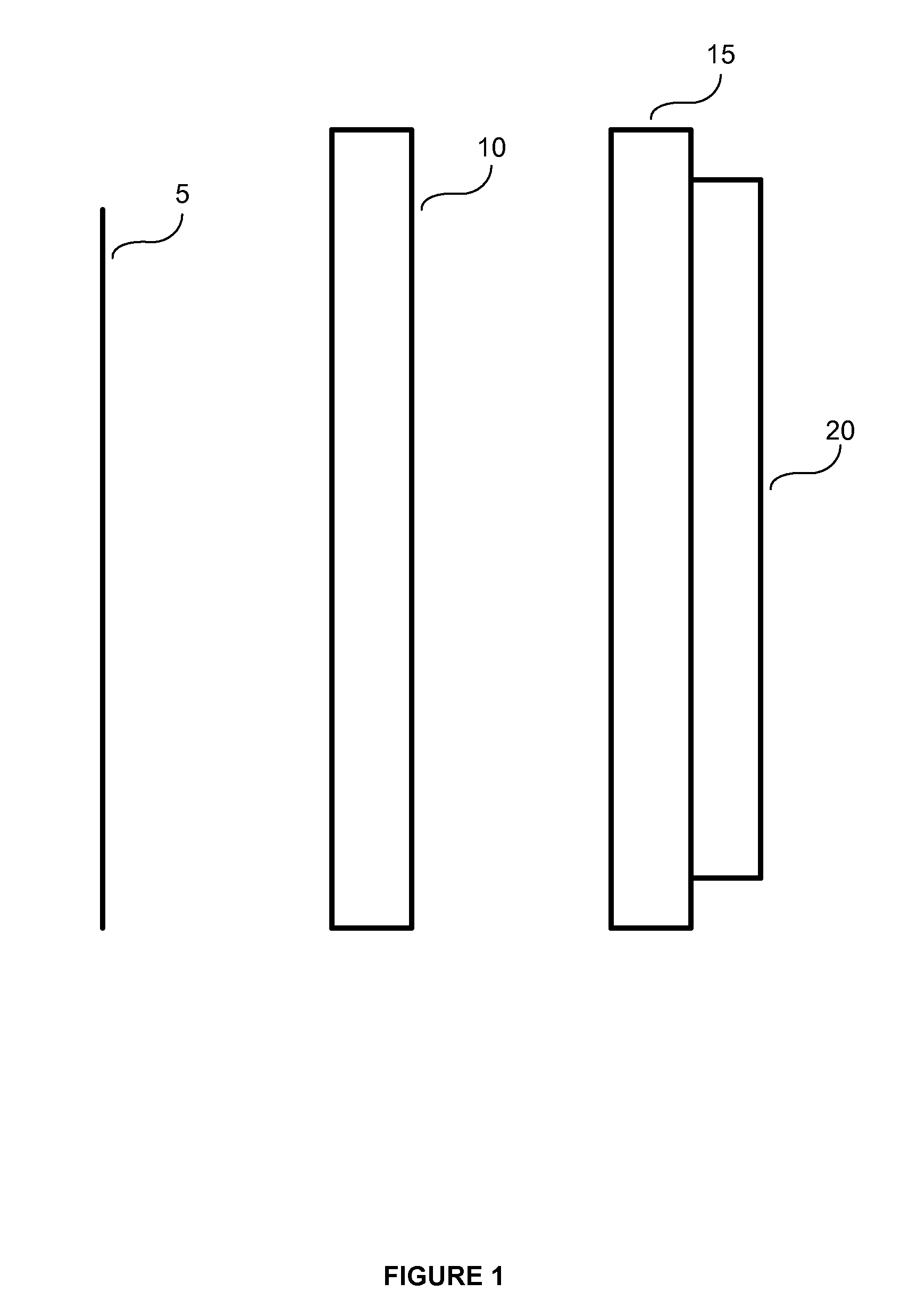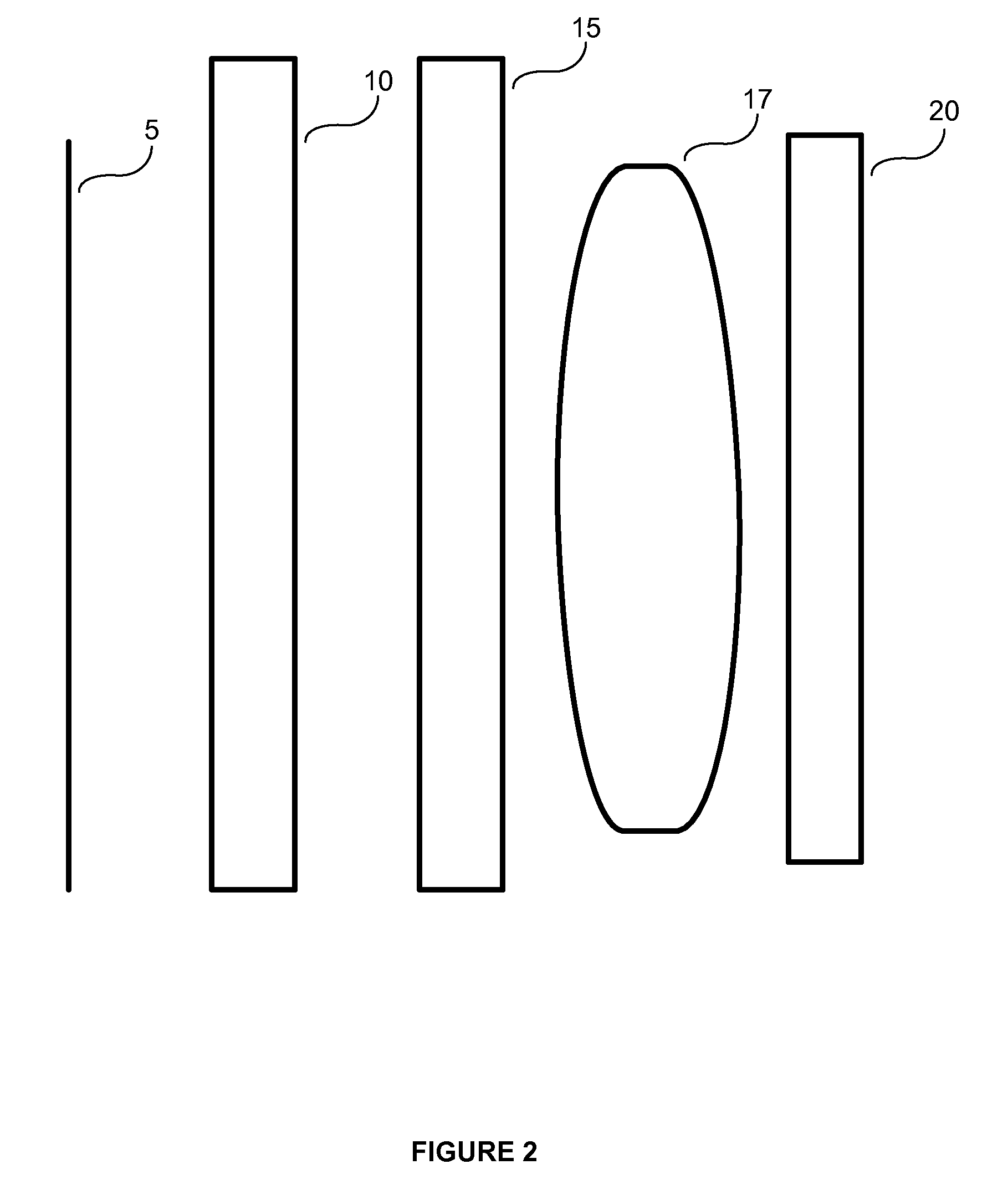Wavefront sensor
a sensor and wavefront technology, applied in the field of wavefront sensors, can solve the problems of reducing the measurement range of the device, reducing the sensitivity of the device, and a defect in the telescope optics
- Summary
- Abstract
- Description
- Claims
- Application Information
AI Technical Summary
Benefits of technology
Problems solved by technology
Method used
Image
Examples
example 1
Testing the Wavefront Sensor with Spherical and Cylindrical Trial Lenses
[0085]Data were measured at a wavelength of 532 nm without focus adjustment so that the full range of wavefront vergences was presented to the wavefront sensor. The accuracy and dynamic range of the Hartmann-Moiré wavefront sensor was evaluated by measuring defocus and astigmatism induced by a series of standard Topcon spherical lenses (e.g., 77 lenses from −20 D to +18 D) and cylindrical trial lenses (e.g., 16 lenses from −8 D to 8 D). Repeatability of the Hartmann-Moiré instrument was assessed by taking 3 repeated measurements within a 2-minute period. Measured trial lens values with the Hartmann-Moiré wavefront sensor were compared to lens values verified with a standard lensometer. Analyses were based on a 4-mm pupil diameter specified in the software. The test configuration is shown in FIG. 22.
[0086]Measurements should be taken to assure tight alignment tolerance (decentration tilt). For example, for accura...
example 2
Comparison of Hartmann-Moiré to Talbot-Moiré
[0092]FIGS. 32-35 demonstrate the improved image quality achieved by the Hartmann-Moiré wavefront sensor described herein as compared with a Talbot-Moiré wavefront sensor. FIGS. 32 and 34 show CCD camera photographs of the shadow patterns created by a Talbot-Moiré wavefront sensor. FIGS. 33 and 35 show CCD camera photographs of the spot patterns created by a Hartmann-Moiré wavefront sensor configured to produce similar sized spots as the shadows depicted in FIGS. 32 and 34, respectively.
[0093]As shown by the comparative figures, the spots formed by the Hartmann-Moiré wavefront sensor are of a high image quality, allowing for a more accurate determination of each spot's center and a more accurate measurement of the spot's movement and position.
example 3
Comparative Examples for Measuring a Model Eye
[0094]FIG. 36 shows two images from a comparative Shack-Hartmann device. FIG. 36A shows spots of light formed when a plane wave is being measured (i.e., an emmetropic eye), and FIG. 36B shows spots of light formed when the model eye has a converging beam of light emerging from it (i.e., a myopic eye). As the beam of converging light passes through the Shack-Hartmann device, the spots grow closer together, and the amount that they have moved is easily observed. However, at the relatively low optical power of only four Diopters, the spots of light begin to lose their contrast and become blurry. This makes the task of determining the centroid of the spot of light difficult, if not impossible. As the power of the converging light grows beyond four Diopters, the spots of light will get even more blurry, to the point of where the device can no longer make a measurement, which is why this device has a low dynamic range.
[0095]FIG. 37 shows two i...
PUM
 Login to View More
Login to View More Abstract
Description
Claims
Application Information
 Login to View More
Login to View More - R&D
- Intellectual Property
- Life Sciences
- Materials
- Tech Scout
- Unparalleled Data Quality
- Higher Quality Content
- 60% Fewer Hallucinations
Browse by: Latest US Patents, China's latest patents, Technical Efficacy Thesaurus, Application Domain, Technology Topic, Popular Technical Reports.
© 2025 PatSnap. All rights reserved.Legal|Privacy policy|Modern Slavery Act Transparency Statement|Sitemap|About US| Contact US: help@patsnap.com



